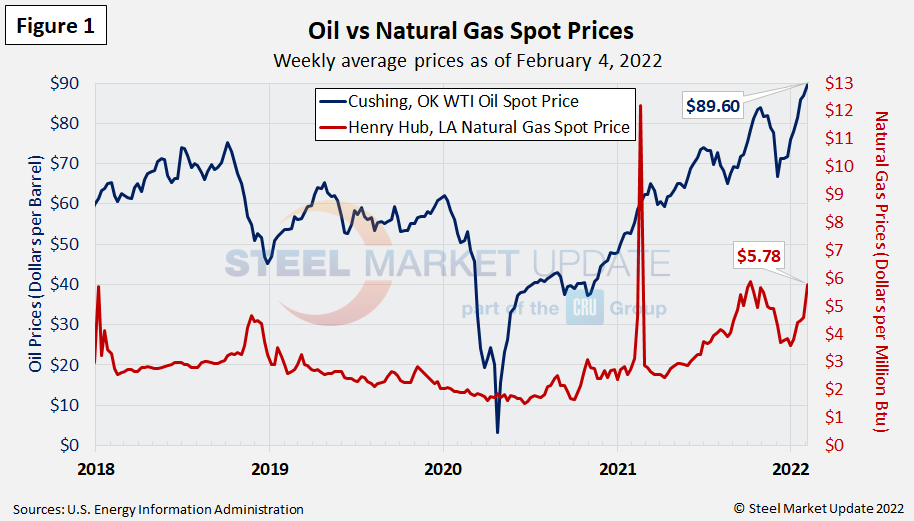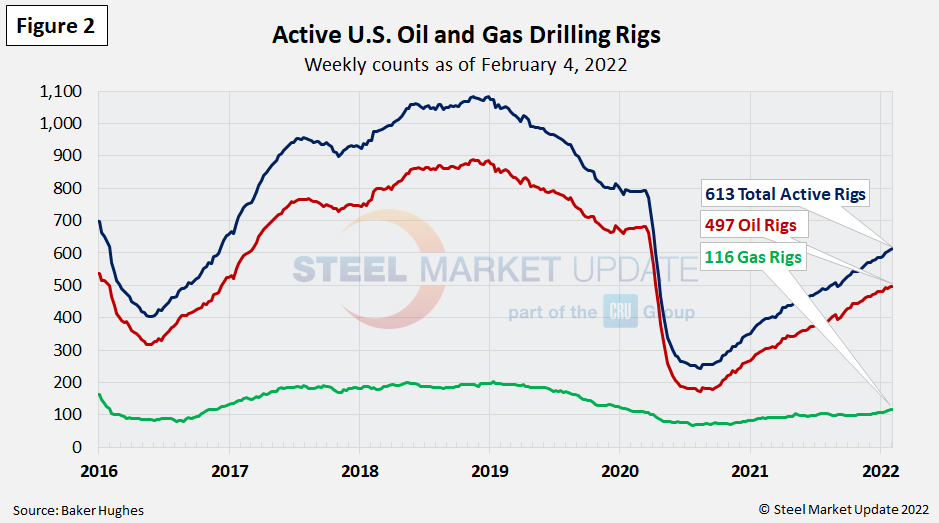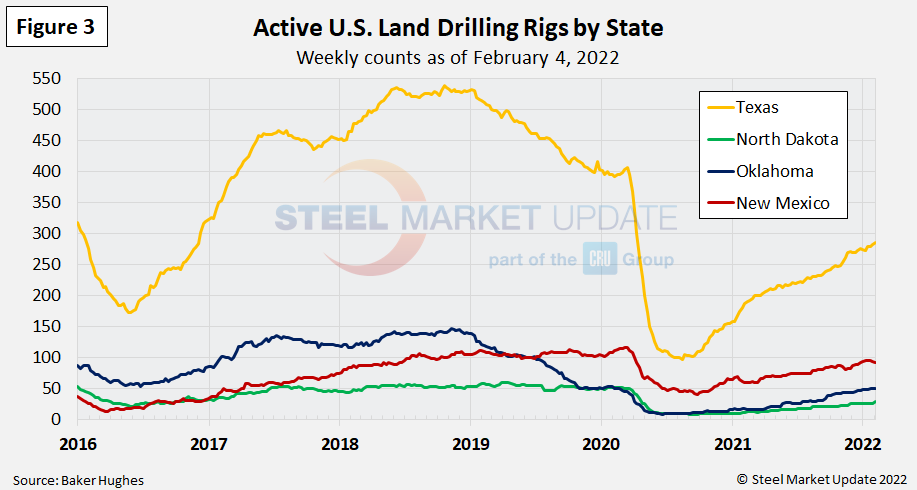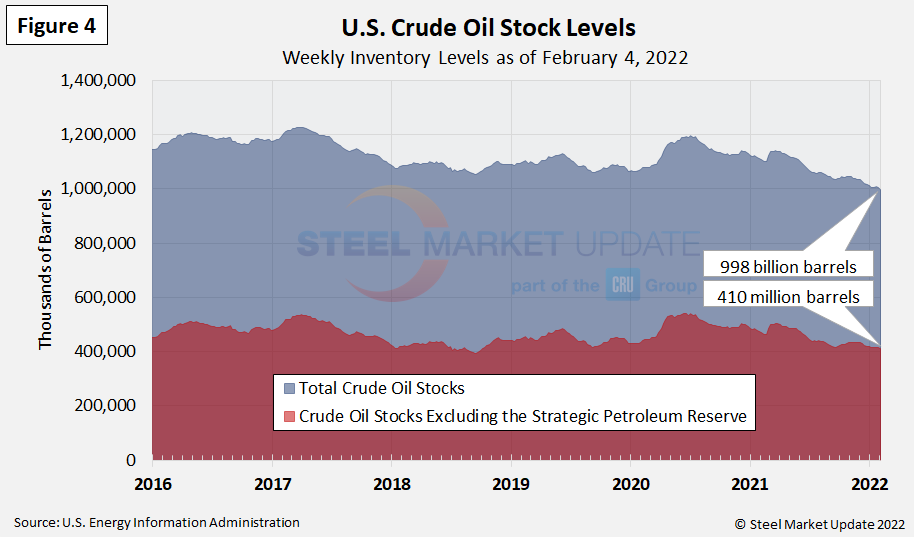Environment and Energy

Energy Market Analysis through February
Written by Brett Linton
February 10, 2022
The Energy Information Administration’s February Short-Term Energy Outlook (STEO) continues to predict a wide range of potential outcomes for future global energy consumption, due to the ongoing pandemic recovery and evolving effects of consumer behavior. EIA forecasts oil prices to remain near current levels in the coming months, while natural gas prices could experience volatility as winter temperatures drive demand and prices.
Spot Prices
The spot market price for West Texas Intermediate (WTI) was at $89.60 per barrel as of Feb. 4, now the highest weekly price since October 2014. Natural gas prices are again approaching recent highs, at $5.78 per MMBTU (million British Thermal Units) as of Feb. 4. In early October, natural gas spot prices had reached a 7.5-year high, peaking at $5.87 per MMBTU (we are excluding the high spot-prices seen in February 2021 due to winter storms and supply scarcity). Figure 1 shows the weekly average spot prices for each product. The EIA now expects crude oil spot prices to average $87 per barrel in Q2 2022, $75 per barrel in Q4 2022, and $68 per barrel for all of 2023. Natural gas spot prices are expected to average $4.70 per MMBtu for the month of February, with no specific price forecasts beyond that.
EIA notes, “The winter weather forecasts are highly variable and create a significant amount of uncertainty in our price forecast… We expect natural gas prices could remain volatile over the coming months, and the way that temperatures affect natural gas demand in February and March will be a key driver of how inventories end the withdrawal season, which will be important for natural gas price formation in the coming months.”

Rig Counts
The number of active U.S. oil and gas drill rigs continues to slowly recover from the mid-2020 low. The latest count was 613 active drill rigs as of the end of last week, comprised of 497 oil rigs and 116 gas rigs, according to Baker Hughes (Figure 2). While up over recent months, active drill rigs are still down 23% from the 793 count in March 2020, just prior to the coronavirus shutdowns. EIA expects rig counts to increase into 2022 as oil production rises in the U.S. The table below compares the current U.S., Canadian and international rig counts to historical levels.


U.S. oil and gas production are heavily concentrated in Texas, Oklahoma, North Dakota and New Mexico. As of Feb. 4, production is steadily increasing, but still down as much as 41% compared to pre-COVID levels. The most active state, Texas, now has 286 rigs in operation, the highest level seen since April 2020. Recall that Texas rigs had plummeted 76% back in 2020, falling from 407 in March to 97 rigs in August (Figure 3).

Stock Levels
U.S. total crude oil stocks continued to fall from the July 2020 high, reaching a new 10+year low of 998 million barrels as of Feb. 4. This time last year stocks were at 1.107 billion barrels (Figure 4).

Trends in energy prices and rig counts are a predictor of demand for oil country tubular goods (OCTG), line pipe and other steel products.
By Brett Linton, Brett@SteelMarketUpdate.com

Brett Linton
Read more from Brett LintonLatest in Environment and Energy

Global Steel Climate Council certifies eight SDI, ASA HR products
GSCC certifies eight products from Steel Dynamics and Arkansas Steel Associates.

June energy market update
In this Premium analysis we examine North American oil and natural gas prices, drill rig activity, and crude oil stock levels. Trends in energy prices and rig counts serve as leading indicators for oil country tubular goods (OCTG) and line pipe demand.

EPA deregulation proposals win praise from steel advocates
Two industry groups are applauding two EPA proposals that would support domestic steel production.

Met coal receives critical materials status
The US Department of Energy (DOE) adds metallurgical coal to the nation’s list of Critical Materials, following its designation by US Secretary of Energy, Chris Wright’s announcement on May 22.

May energy market update
An analysis of the North American energy market in May.
